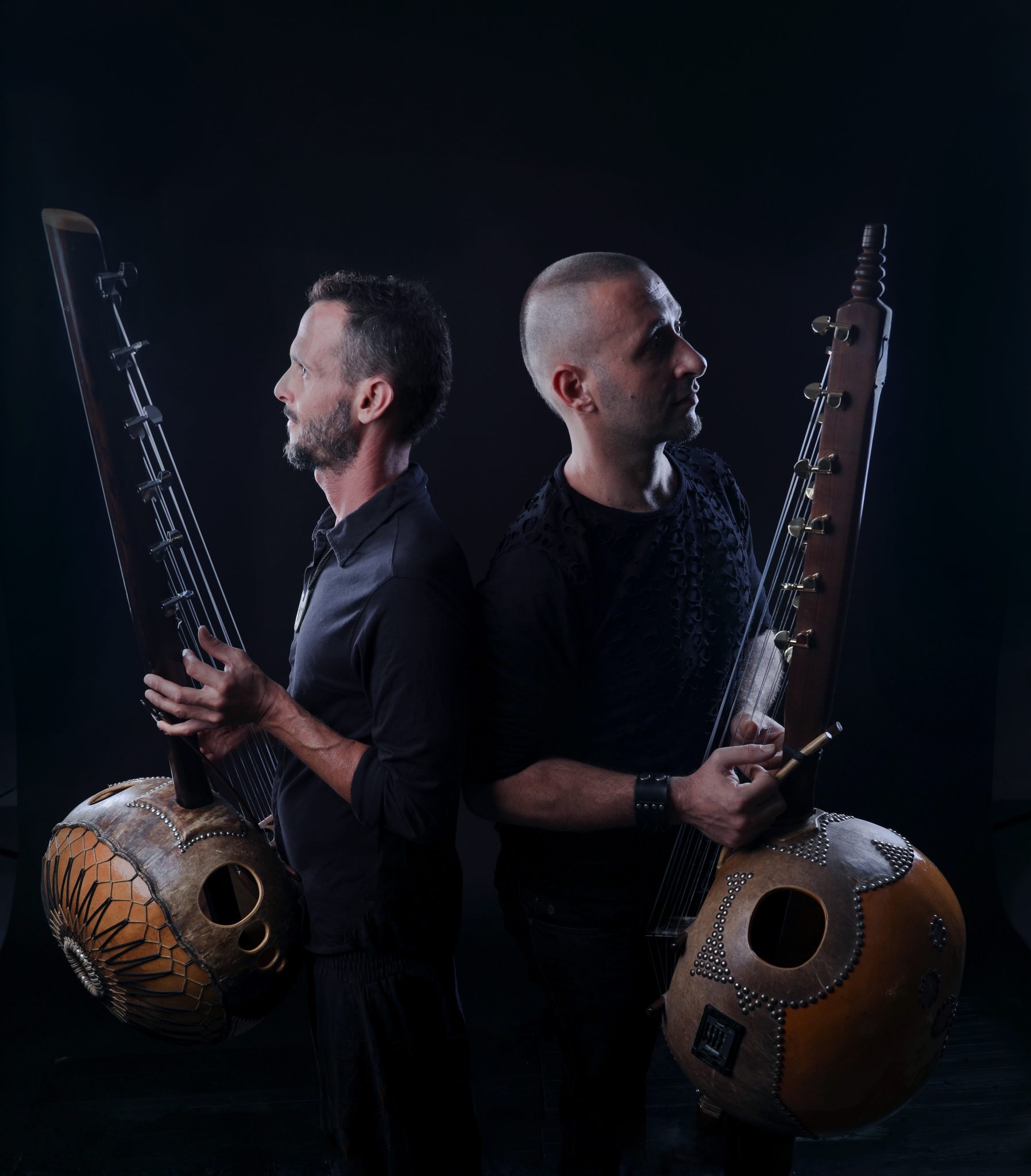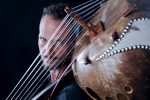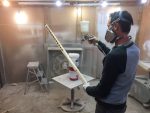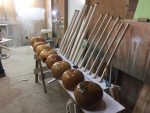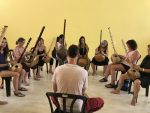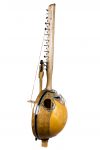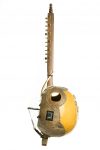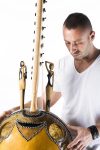For the video about chill out music we had only to record the accompaniment of ethnic musical instruments. And literally one day before leaving India, we met with two members of the Kabako musical group to implement this idea. Kabako is five unique composers and multi-instrumentalists. They combine the sounds and rhythms of all five continents of our planet.
(Here you can read an interview with Jyoti Supernaturel).
And on that hot day, Shahar and Yonathan arrived at the meeting and represented to us the traditional sound of African musical instruments kalimba, balafon and ngoni. We recorded it in the shade of the sacred Banyan tree and the guys talked about the ideology of the Kabako group and their factory of traditional musical instruments.
Artifex: The first question is geographical - where did it all start?
In West Africa, Burkina Faso! There we met in 2001 and by that time both had long been studied traditional music in different areas of Africa. We learned from different masters directly! We also studied ancient methods of making folk instruments and began to construct modern modifications based on them. We found our inspiration in this! This is how we called our team Kabako – so the word «inspiration» sounds in the language of the African Jula tribe. And since then we have performed around the world with concerts and founded the company for the production of musical instruments Kali Sound.
Artifex: This is the most interesting! Tell us about your instruments.
This, for example, the African harp called Ngoni. Or Kora - its big sister. And Balafon as well – a percussion instrument with surround sound, which comes from pumpkins of different sizes, they are called calabas. We have a lot of instruments! Besides, we created our own and called it Kali Drum. It is a combination of African kalimba with classical drum. We travel, so we made mini-versions of our instruments for easy to take them with us on the plane. In our music on stage, we combine authentic sound of live instruments with modern electronic sound. For this, we take the traditional tools as a basis and give them a more modern design and implementation. This is why we have created many instruments for our team ourselves.
Artifex: What materials do you make your instruments from?
It is based on dried pumpkin - calabas. Rosewood or ebony as well. And we use different types of leather, for example, goat or eco-leather for those who are against the use of natural. For strings we also use modern materials, All this is very exciting - it fascinates both the process and the result.
Artifex: What musical genre does your creativity belong to?
In fact, there is no any particular genre. We are out of one direction. Our music combines traditional sounds from different countries - India, Africa, South America, Israel, France and others.
Artifex: Is it true the instruments you play cannot sound inharmonious?
Yes exactly. These instruments are not fundamentally similar, for example, to piano and violin. Ngoni has five notes only, and this is a full-fledged harmonious mode - speaking in terms of classical music theory. Many people are afraid of practicing music precisely because they start with those instruments where there are a lot of notes and, among many combinations, only a few sound harmoniously and meaningfully. People make mistakes constantly, try to follow the rules, which are not always clear, and as a result, they lose the feeling with which the music begins. That’s why many quit, thinking that this is just not their occupation, and no longer return to the music.
In Africa the studying of music begins from rhythmic – even a classical musician will tell you that it is the cornerstone. They play percussion instruments such as, for example, djembe. And the feeling of music appears. The results of drumming come very quickly, and you can choose between Ngoni and Balafon which contain only five notes. The next step is Kora– an African harp and the Guinean balafon containing seven notes already. At this stage, the purpose is the achieving harmony in sound. And only then you can go to the piano and other instruments, containing 12 semitones.
Watching our teachers, comrades, students - we see that this is the right approach to mastering a musical language, because in small steps it is always easier to move. In one month, you will already enjoy to play on your musical instrument.
Artifex: You said «students», that is, besides the production, do you also have your own school?
Yes, we give master classes, and they are very popular, people are keenly interested and they want to go this way - if only because it is fun and it charges! We see the mission of our company Kali Sound in this. To show people the opportunity to master the art of music faster. Thanks to these small steps, using several instruments, different in complexity. Anyone can study music and play an instrument, it's not as difficult as it seems.
Artifex: Is this mission also reflected in music Kabako?
Yes, right! The point is the communication between people of different cultures, the acceptance of experience and knowledge, and the embodiment of these sensations in beautiful music. Each member of our group is unique. We were born in different countries, we speak many languages, and now, uniting our stories, we create music. The process of globalization leads to a mixture of cultures, and now there are several of them even in one person. It is precisely because we seek to preserve the feeling of harmony amid the chaos through music, we believe that it can help to achieve a balance throughout the world.
Artifex: Are you currently working on any new instruments?
Not at the moment. Now we are testing those that have already been created for our team. One of them is the modernized Ngoni, it has 14 strings and electronic system - designed specifically for large concerts. It has no analogues, it is completely our concept.
Artifex: How many people create the instruments with you?
We construct them two together. And other professionals take part in the preparatory processes - at all stages - from seed, from which grows calabas…
Artifex: Is it possible to see your instruments in the Internet?
Until recently, we had a lot of orders that came directly. But now we have Facebook and Instagram public pages, we are also working on creating our own website. So of course - write a message and you can choose an instrument and get it anywhere in the world.
Artifex: When you did anything for the first time most recently?
We are constantly making something new. We study ourselves and with our children. This world is quite limitless. In addition, whenever we construct a new instrument, it is for us like the first, because each next one will always be different from the previous one. All of them are exclusive, as created by us, with our own hands.
Artifex: Do you know Russian musical instruments?
We began our production with the creation of African instruments, because they are close to us. The sounds of these ancient instruments come from the cradle of human civilization and it is the fastest way to music through them. For creating a good tool, we should observe the traditions that have been tested for centuries - we need to spend much time on research and it inspires us! We travel a lot and everywhere we collect original sounds, rhythms, materials ... Therefore, when we come to Russia, we will definitely study this question there.
Artifex: Thanks for the interview! And we are waiting for you in Russia!
Special thanks for help in preparing the interview to Renata Lo-Tan
Author photo: Yuv cohen
Translator: Elena Magadeeva
